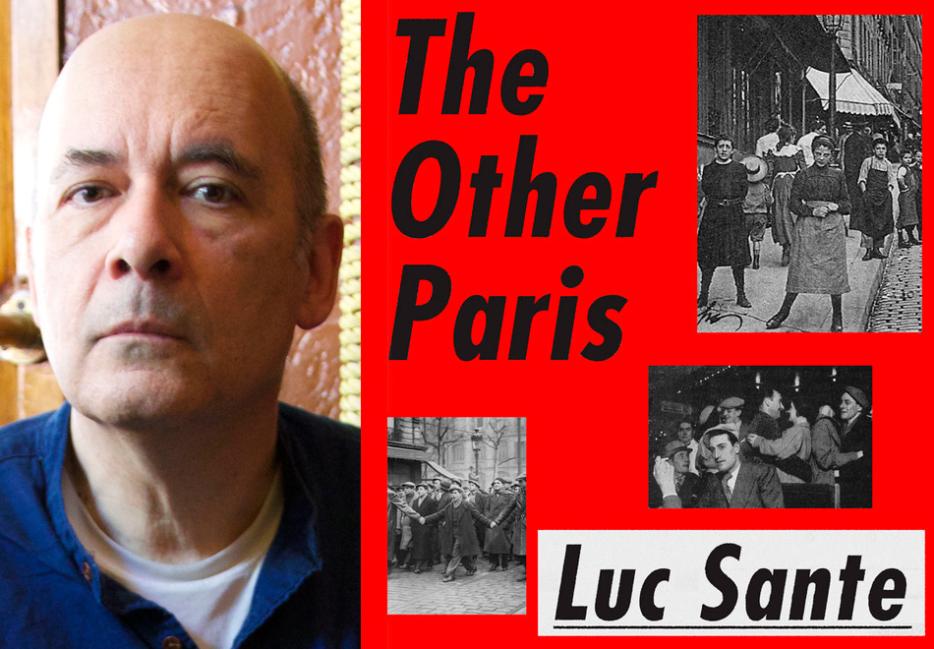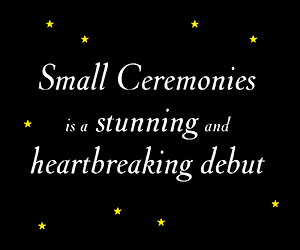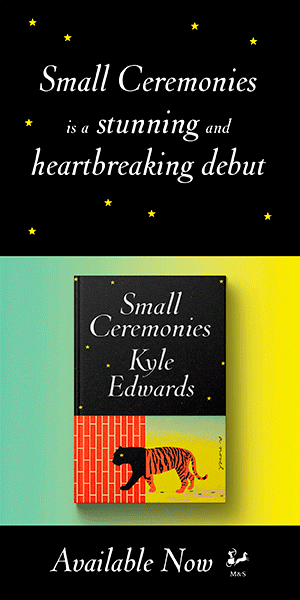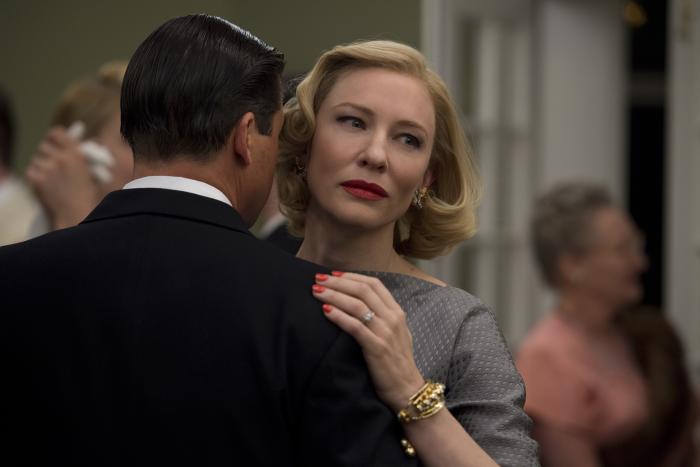When the Paris Commune fell in May 1871, as government troops were shooting anybody stained by gunpowder on the spot, they captured a man named Maxime Lisbonne, commander of the pile of religious statues that made up the Saint-Sulpice barricade. Along with many other revolutionaries, he was deported to the penal colony in New Caledonia, a thousand kilometres east of Australia. Lisbonne would not see his city again until the amnesty of 1880. Like an aging boxer knocked around by more intangible powers, he decided to open a themed bar: The Café du Bagne, or Prison Café, which Luc Sante’s new book The Other Paris describes as “appropriately decorated, [its] servers in matching garb.”
Lisbonne and his club are the sort of civic institutions Sante prefers. In 1991 the Belgian-American writer published Low Life, a conjuration of old New York’s con men, saloons, brothels, corrupt cops, street gangs, orphans, bohemians, slums, and vaudevilles. “I wanted Sunday-afternoon strollers to see the bones of the dead beneath their feet as they circled the blocks below Houston Street admiring the architecture,” he explained later on. “I wanted to prevent amnesia from setting in.” Sante’s Parisians are laundresses, anarchists, immigrants, bandits and singers, eking out pride or jouissance at the feet of politicians such as Adolph Thiers, “a security guard for the interests of the propertied classes.” As ISIS gunmen slaughtered the city’s amblers and concertgoers last month, I fumbled backwards through The Other Paris to this apocalyptic passage, written by Chateaubriand after King Louis-Philippe installed his Egyptian trophy on the site of a guillotine: "The time will come when the obelisk of the desert will once again know, in that place of murder, the silence and solitude of Luxor."
Sante finds the poetry in old bureaucratic documents: An 1889 census listed citizens of 49 different countries living throughout Paris, including “524 Brazilians, 861 Turks, 63 Haitians, even a lonely pair of Abyssinians.” His straying, discursive narration follows the city’s many flaneurs, like Bulle and Pascale Ogier’s characters in the Jacques Rivette filmLe Pont du Nord, each walking the map as if playing an elusive game. Their antagonist might be Baron Haussmann, who renovated Paris under Napoleon III, building beautiful parks, thousands of trees and a whole new sewer system, but who also disdained the proles as one more engineering problem to be solved. Never actually ennobled, he was nonetheless baronial. Haussmann’s memoirs declared that “Paris belongs to France and not to the Parisians who inhabit it by birth or by choice.” To Sante it remains “the world capital of contradictions, which could be justified as dialectical or shown up as double-dealing.”
*
The Other Paris resists the personal, ahistorical memory of nostalgia in its own way. When the attack in Paris happened, I didn't realize at first that the Bataclan was such an old venue. This 19th-century chinoiserie building.
Exactly. And it's named after an operetta by Offenbach.
Is there a long history there? Did it come up in your research at all?
Yeah, it's actually mentioned in the book. It opened—I forget the year, sometime in the 1880s. And it was a music hall until the '20s, and then it was a movie theatre until I think the '70s, and it's been a rock venue since then. And that's true of quite a few music halls around Paris.
I guess that's the same—there's movie theatres in North America that started as some huge music hall, and then they started screening films, and then maybe became a porn theatre at some point in the '70s. And now they're often just closing down.
Yeah, tragically. But it's a beautiful building.
I also thought of your book when I saw those news reports saying "this is France's worst massacre since World War II." Which isn't actually true, because as you mention, it was the massacre of Algerian anti-colonial demonstrators in 1961, police throwing manacled civilians into the Seine. Or maybe it is true, because nobody recorded the precise number of deaths, and it wasn't even acknowledged by the French government until quite recently.
That's right, and nobody knows the number. The estimates have ranged widely, but it might be well over 200 people. And it was officially unacknowledged until—Hollande, actually, acknowledged it within the last couple of years. Something like that. They denied it even happened for decades.
And it took place under maybe the single creepiest figure in the book, [Vichy official and post-war bureaucrat] Maurice Papon—he's sort of used to illustrate the insidiousness of French racism.
Uh-huh, definitely. I mean, French racism, and French fascism in general. I don't know if this view is true in Canada too, but I think Americans have this view of the French as being these liberals, and that's true as far as it goes—everybody remembers the Commune, et cetera et cetera, but there's at least as strong an undercurrent of heavy right-wing business in France. In fact, the night of the attacks, I was at the University of Chicago, at a conference with a whole bunch of French writers and intellectuals, and everybody was ashen, as you can imagine, with the distinctive sounds of French electronic communication, this jingle going on all over the room. Finally everybody ascertained that their families were okay and their friends were okay, and then they started worrying about fascism, that the National Front was going to capitalize on this.
The apocalyptic scale of it reminded me of that Chateaubriand passage you quote: "The time will come when the obelisk of the desert will once again know, in that place of murder, the silence and solitude of Luxor." I'm going to move on to the less depressing questions... Do you remember the first time you saw Paris?
I do. It was the week before Easter, 1963. I was eight and a half years old; I went there with my mother. We had just spent three or four unrelievedly bleak months in Belgium—it was a very dark winter, and my grandfather had dementia and was just out of control. He was in this 17th-century hospice, and it was very cold, very dark, very gloomy. So we needed Paris really badly. We took the three-day bus tour of the city and Versailles, and my mother did various religious pilgrimages, because my mother was very religious. I remember seeing the alleged crown of thorns in Sainte-Chapelle. And Paris was just brilliant, it was exciting. I didn't know why, I had no idea of what was going on culturally there, but it a very exciting moment in Paris, and I was somehow getting this telepathically at my young age.
But the one thing that really struck me was going to the Louvre. The Louvre was the first museum I'd ever been to in my life, and oh, God—in those days it wasn't the way it is today, it was kind of dark and gloomy, really. The Victory of Samothrace was some ghostly apparition in a corner. But going into the room with these vast Cinerama paintings by Delacroix and Géricault and David, the Victory of Samothrace, the Coronation of Napoleon, and The Raft of the Medusa, they just knocked me flat. I was scared, in a really good way. I think that was the key moment in my life, honestly.
I saw this Paris Review interview where you said that you later lived there briefly for a couple of periods, and you mentioned going to African discos, which made my ears prick up.
In '74, we used to go at least once a week to this African disco called Le Caméléon, which was on Rue Saint-André des Arts, and it was this tiny, unventilated basement. We danced and danced for hours. There weren't very many people there. It was the summer of "Soul Makossa," and of "That Lady" by the Isley Brothers, and we just danced ourselves into a stupor all night long, sweating out. No excess weight was gained that summer. And then I went back nine years later and Le Caméléon had metamorphosed into this huge club. I don't even remember where it was, what part of town, but I remember that it was a wonderful experience. My memory's kind of dim, but I remember meeting a lot—well, when we went to Le Caméléon in '74, we were almost the only customers, this group of four or five Americans. And going to Le Caméléon in '83, it was a very large African population there. I remember meeting all of these people from Congo and drinking with them and stuff like that, although my memory is considerably dimmer about that trip than the one before.
I've only been to Paris once, around the same age you first went, but in the late '90s, so the Louvre already had I. M. Pei's glass pyramid outside. And sadly I think I was most excited to go to Euro Disney, although a total eclipse did happen while we were there, so that gave everything this surreal atmosphere.
Speaking of surreal, I have one more memory of the Louvre in '74. I went there one day, and for some reason, the place was completely filled with Red Guards from Beijing, with their little blue uniforms and blue caps, male and female. Hundreds of them. That was delirious.
Huh. Maybe Zhou Enlai was visiting or something...
Could be.
And that would've been the tail end of the Cultural Revolution.
Yes, and the French were still intoxicated with Mao.
In many ways this book feels like a sibling to Low Life, where you mentioned trying to avoid recent works of "hard" history [about New York], focusing on "flavour and incident, anecdote and eyewitness." But Paris is a very different city, right down to the bones, it's a tangle rather than a grid. Plus we have the Internet now! Did you change your research methods at all this time?
Not really. I did rely very, very much on one historian primarily, and that's Louis Chevalier, who was kind of a nutcase himself. He was a very serious historian, and he wrote this book [published in English as Laboring Classes and Dangerous Classes: In Paris During the First Half of the Nineteenth Century], which was just a humongous help to me. He also wrote a whole series of other books, some of which I relied on and some not, but mostly I relied on one calledMontmartre du plaisir et du crime, or Montmartre, Pleasure and Crime. It's the fruit of obviously incredible monastic dedication to his subject—it's like 800 very closely-set pages, but it's distinctly woollier than your average academic title. And as his books progressed through his life, they get further and further away from the academy. I also relied on another historian, Richard Cobb, but not in his academic mode. But with Paris, it's very different from New York, because one of the frustrations with New York is that you have all this lore, all these received tales, and the minute you start researching them you hit a wall. They all seem to dead-end in the 19th-century yellow press, where indeed they might have been completely invented by press hacks one sunny day.
With Paris, though, there's nothing that isn't covered by multiple witnesses. In some cases, those witnesses include some very good writers, so that the tale about the New York dive where people sucked dregs out of barrels through rubber hoses and paid by the minute rather than by the drink—that may have happened, may not have happened, may have been invented. But the comparable Paris tale is one of a dive called Le Cabaret de Paul Niquet, where they had pressure-hoses built into the walls, so that when people started fighting they turned the water on and turned up the pressure if they didn't slack off, and this is not only covered by multiple people, but one of the witnesses is Nerval. So absolutely everything is counterbalanced. And there's so much to draw on, there's so many great accounts of Paris, many of them untranslated—in many ways, I feel this book is kind of a collage, and I brought in these dead Parisians as my collaborators, both verbally and visually too.
I think you actually said this in the text of Low Life—the structure is almost like a flipped-over tarot deck, whereas here it's this wandering, unhurried route. Was that intentional?
Well, yeah, I would say so. Many years have gone by since I wrote Low Life, and I'm older, and I think I'm less hurried in general, less frantic. Low Life was my first book. I've learned quite a bit about how to do research and writing since then. And I had this overabundance of material, where with New York I was frantically stretching. Really, I had so much material that I ended up using maybe 40 or 45 percent of my research. There's so much I jettisoned—flow kind of made its own dictate. There are many things that I thought I was going to get into, and the flow just said, No, Charlie, sorry. I was also determined to keep it at about 300 pages. I wanted a book that people would actually read. It could've been a 900-page doorstop, but those are just not fun.
To me, that flow—there's a sense that characters or incidents are recurring throughout history. So [Maurice] Papon going from Nazi collaborator to Gaullist police chief, after falsely claiming to have been in the Resistance, seems like a far more sinister variation on Eugene Vidocq's criminal-turned-cop gambit. You also spend a lot of the book describing Parisians in terms of their professions—not just rag-pickers or sex workers or gangsters, but also some jobs like paid applauder that have since vanished, and others that people just made up for themselves, like ant farmer or clotheslender. It's kind of Marxian, but you also write about each form of labour as social groups, with their own codes, hangouts, fashions. Why did you settle on that form of analysis?
It just materialized, really. An awful lot of those really remarkable jobs, like zesteuse for example [somebody who sold discarded lemon rinds], those were all recorded by Privat d'Anglemont, my favourite flaneur of them all. And I was interested in the improvisational aspects of those kinds of jobs, which of course makes you wonder, how did people keep body and soul together? And it seems that going up until the late 20th century, there were lots of people manufacturing a living, who could just get by. Which was something that I was familiar with from my own youth, we kind of did the same thing. I knew people who had jobs that were equally as strange in the late '70s and early '80s in New York City. If we have to work to live, assuming that farming ants or whatever you choose to do actually brings in enough to keep a roof over your head and food in your belly and clothes on your back, then that's great, you know? Certainly beats working for a corporation, I think.
To what extent is modern Paris still the city that Haussmann designed?
Oh, to a very large extent. I mean, you see those long hedgerows along the boulevards, those were all Haussmann houses, and that's the characteristic look of Paris by now. And of course the Bois de Boulogne, the Bois de Vincennes, the Parc Monceau ... the north-south axis of the Boulevard de Sebastopol and Boulevard Saint-Michel ... a lot of the circumferential boulevards ... there's so much of Paris that was put in place by Haussmann, and that will endure. Most of that stuff is just not going anywhere.
He definitely seems to be one of the most pivotal figures in the book, not just because of what he did to the city but in terms of his ... philosophies? He was the apostle of property speculation.
Yes, totally.
I do love that there's still a bit of the 19th-century mountebank around him, how he just assumed his aristocratic title [laughs].
Right, right. And also, you start getting the characteristic form of—well, it's not racism yet, exactly, but it sort of is—where he says the true Parisian is somebody who acquiesces. The poor people, the resisters, all that riff-raff, they must be outsiders. And of course at that point, referring to outsiders—there might be Roma and Jews in the bargain, but mostly it's people from the middle of the country. People from the south [of France] were then considered almost a different species. And this kind of rhetoric has persisted and increased. There's a shadow of Donald Trump in Haussmann too.
Mm-hmm. He razed his own childhood home during the renovation of Paris, which is pretty impressively ruthless. Or impartial, I guess [both laugh]. Are there any recent buildings in Paris that you like? I agree with what you wrote about the Tour Montparnasse—it's not even as remarkably ugly as some of the skyscrapers that have gone up in London recently, it's more the total disdain for its surroundings.
It was new when I was there in '74—it had been built within the previous year I believe—and it was just such an aberration. It was such a "fuck you" to the rest of the city, which was then still kind of the old—they'd torn down Les Halles already, but it wasn't that much changed. Although I was unaware of how much the '60s had changed things. To the untutored eye, Paris looked like the same city that had existed for at least a couple of centuries, and then you have this thing popping up. As far as recent buildings...somebody else asked me this question, and I have to say, it's kind of a sucky museum, but the Musée du quai Branly, which is the anthropology museum, that looks alright. It's kind of a novelty building in a way, but so are they all. I certainly don't want to suggest that all old things are good and all new things are bad. It's just that so much of the new insists on this kind of radical simplification, blank facade, also prohibiting access—not just like, you can't get into the building, but it's not inviting to the passerby.
Just compare the Bastille Opera to the Bataclan. The Bataclan is this crazy pile, it's not good architecture, but it's kind of fun, and you want to go inside. And the Bastille Opera is just this blank-faced thing, this object, that's been set down in the middle of the Place de la Bastille, and really looks like a parking garage, really looks uninviting, looks out of key with everything else surrounding that square. I've certainly been in other cities where there are aspects of modern architecture that I think are fine—I was actually sent to do a travel-magazine article on Rotterdam and its modern architecture, and I thought the modern architecture in Rotterdam is fantastic. Of course, Rotterdam was leveled during the war, so there's no choice but to build modern architecture ... You have the same thing in New York, where a small population of skyscrapers was terrific, it was just part of the city, but now there's so many of them and there are more every day. It's nothing but this forest of needles. You thread your way between them, but they all reject you, the pedestrian. That's the trouble with Paris, which is rather an inviting city, always has been, and with every glass-and-steel facade that goes up it's another no-go zone.
I think you call it "aggressively repellent" in the book, but that's actually why I like the Pompidou Centre—
I gotta say, that's one thing in the book that I have reconsidered—I thought, it's not that bad, really. I remember really hating it when I first saw it in the early '80s, but that could be so much worse. And all those tubes and gimcracks that surround this thing, they actually are rather inviting, so I want to put an asterisk next to my characterization.
What I love about it is that, by putting all those things on the outside, it allows for these vast spaces when you go inside, this totally artificial form of the sublime. Even as a kid, I liked that. But that sort of Corbusier-ish high modernism you described probably looks best in a city like Brasilia, that's just completely designed with it in mind.
Right, exactly.
Conversely, what do you think the greatest loss from the last century or so, post-Haussmann?
Well, so much of my book is canted around the destruction of Les Halles, which effectively ended the people's city, you know? That it was this great leveler, something the entire city had in common. If you yourself didn't buy your vegetables there, then whoever was supplying you with vegetables was buying them there. Les Halles was this huge series of colossal cast-iron pavilions, which presented—I've never seen a list of markets ranked by size, but it must have been among the top five anywhere in the world, it was so large. And every kind of comestible was available for sale, and it employed thousands of people in all these categories of trades. The poor could go and pick up discards, and whatever was unsold after a certain hour, a lot of it was open to ... grabbers. It brought the country into the city, it had this population of farmers and truckers from out of town, who had this topsy-turvy schedule where they'd be working in the middle of the night and be drinking at six o'clock in the morning, get paid at ten o'clock in the morning. The whole thing was just this marvelous contraption. And it went all the way back to some unrecorded medieval or possibly Merovingian point of origin. Then suddenly it was shuttered.
I remember, I saw Les Halles with my mother in 1963. When I went back in '74, they'd already torn it down, but I didn't really know that. I just remember going to Les Halles in the middle of the night, and there were still a lot of people selling vegetables out of trucks, so I thought that was Les Halles. There was still some of the atmosphere, and some of the restaurants and bars were still there. To me that's the greatest single loss. Also I mourn, without ever having seen it in its heyday, the Belleville-Ménilmontant as it was. By the time I experienced that neighbourhood, it still has some of the same feeling, some of the same—it's still the most mongrel part of Paris. You've still got as many nationalities as are gathered in Paris anywhere, they're most concentrated in Belleville-Ménilmontant. But a good chunk of that neighbourhood has been replaced by housing projects, and these tiny little houses and courtyards and bars tucked away—have you ever seen The Red Balloon?
No, only the image of it in the book.
Oh, well, the whole thing is on YouTube, so you can definitely see it, it's not very long, it's half an hour or something like that. And it's a movie about children, it's a lovely little parable, but it shows you the flavour of that neighbourhood before it got reorganized. The other neighbourhoods that got transformed into housing projects, down in the lower reaches of the 14th and 15th arrondissements, they were probably more interesting than what's there now, but they weren't quite as characteristic and idiosyncratic as Belleville-Ménilmontant, because that had the advantage of this topography that it adapted to.
There's actually so many images in the book that I almost didn't think of them as illustrations. They're like a narrative within the narrative. Do you tend to think visually in that way? And how did you go about finding them all, not to mention getting the rights to them?
That's the thing, actually, because I'd had the experience with Low Life of never having done this kind of thing before, my publisher when I turned in the manuscript said, "How about some illustrations?" And I had to go to these various agencies and museums and essentially rent things from their catalog. Almost everything was in the public domain, but I had to secure permission to use them, and pay a lot of money, and then pay again for paperback, pay again for the Spanish edition and the British edition, et cetera. I was determined not to repeat that experience, so I started collecting pictures the minute I got the contract for this book. They come from flea markets in France and Belgium, many, many, many, many come from eBay, and many come from old books and newspapers and magazines that I acquired along the way. I ultimately collected about 900 pictures, and I was a little afraid that my publisher would just want, say, two signatures of images totaling maybe a hundred, but instead the brilliant design team at Farrar, Straus and Giroux came up with this format, which is delightful.
I wish some of the horizontal—some of those postcards are reproduced a bit too small, but what are you going to do. So I only actually ended up having to pay rights for one picture, and I might've jettisoned it, except that they chose a detail from it for the cover, which is that picture of a Popular Front demonstration in 1934. I bought it on eBay, it had been the property of some long-disappeared photo agency that was bought by United Press International, and United Press International in turn was eaten by Corbis, so I had to secure permission from Corbis, who didn't even know they owned it, one of those things. It took a week or more for them to track it down, so that if I'd been guerrilla-publishing this book I might have been able to bypass even that one, but in the end it worked out—I think there are 365 images, something very close to that. And all of them are either public-domain or fair-use.
In some cases I have the original photograph, and in other cases it's something I scanned out of a book. There's so much visual richness. Around 1910, competing postcard companies during the postcard craze made it so that there's <href="#tbm=isch&q=paris+postcards+1910%5c">postcards of almost every single corner in Paris, including some of the least attractive, because they weren't meant for tourists, they were meant for locals. And also, to my great joy, I was able to call in as collaborators all my favourite 19th-century illustrators, like Daumier and Grandville and Gavarni and Steinlen. Each one of their illustrations extends the text a little further, especially Gavarni. There's always a little narrative going on there, which is kind of sticking out from the book, and to have these dead geniuses as my unpaid collaborators is a great boon.
I must have spent an hour yesterday just going through Brassai photographs. They're so evocative, he makes everything look like a production still, you know?
I know, I wish I could've used Brassai, but he's not in the public domain and his estate is a beast. I published a little review of the last book of his, on the New York Review of Books blog, and I think it wasn't published until three months later, because they were trying to negotiate rights to use a few illustrations. And that's for review of a book about him, so you can imagine...
And those photographs of gay bars from 1930s Paris, for example, outside of some contemporary images from Weimar Berlin, I don't think there's any other documentation like that.
Yeah. Well, there's the Brassai pictures—in the text I used pictures that are kind of comparable, but with no credit given. They appeared in the '30s in a magazine called Le Crapouillot, there's a special issue they did on les deux prostitutions, meaning male and female prostitution. And who knows who the photographers were, but they had quite a few.
Can you go into the whole idea of the Zone? I guess there are rough equivalents in other cities, but none of them seem to be ... freighted with metaphor in the same way.
The Zone was this kind of DMZ built around the military wall—or not built, rather. It was not intended to be built upon, it was meant to be neutral ground, which I guess wasn't too heavily enforced. The first people to colonize it were the rag-pickers, who were finding greater impediments to pursuing their trade in the city itself, and gradually started moving out to the Zone in the 1880s, 1890s. The first big market they established at Saint-Ouen was called the marché aux puces or flea market, sometime around 1897. And then beginning in the last decade of the 19th century and going up until the 1920s when they knocked down the wall, the Zone was this remarkable—it was poor people, Roma, but also a lot of people who were on the lam.
You had this thing in French law where if you'd committed a major crime—even a minor crime, in some cases—if you'd gone to prison, you could be excluded from the city of Paris. A lot of people who'd been to prison settled in the outskirts of Paris, and when the Zone came in that was just the natural place for them to go. And they would of course sneak into the city, but they would build their huts or their shacks in the Zone, and it became this great collective place to live for all sorts of people who did not want to traffic in straight society. A lot of drinkers.
In the chapter about political uprisings, there's a preamble about the famous classical revolutions in 1830 and 1848, but you spend most of it discussing the Paris Commune and then the later "Bonnot Gang," sort of a violent anarchist group. Do you feel like the juxtaposition between those two examples of political action is relevant today, the mass revolution attempting to remake society and the individual cell?
Well, once again I found my flow or my intuition or whatever demon exists within me organizing this in ways that I didn't expect. I fully expected, for example, to give a lot of space to May '68, and it wound up not happening. I think the rationale is more or less that the Commune was the most serious attempt at revolution, and this little glimpse of something that might have happened. This free society that was not ruled by any one ideology. It was this great babble of voices that somehow came together at this point, and then was wiped out, just trampled upon and murdered. And then there's the anarchists of the 1890s, and they too are this babble of competing voices, because you have all kinds of anarchists, and they're fascinating, but—I witnessed this phenomenon myself, actually, in the early '70s, this pressure towards ever-increasing radicalism. Constantly being outflanked on the left, and going more and more in the way of destruction.
And by the time you get to the Bonnot Gang, it's the logical extreme. They have this impulse towards revolt, but most of them, or at least the people who are making the actions occur, are extreme individualists. Among the people who were in that tendency, you can imagine at least some of them, were they alive today, would be attracted to a kind of Ayn Rand scenario. A lot of their program does seem to be about going further and further out towards the limits of rational discourse. You know, that not only do you abolish the family and the state but you abolish just about all links between human beings, all collective manifestations, even alternative versions of society. And then what are you left with? With violence.
It seemed to me that the Bonnot Gang—who are fascinating, and definitely complicated—you had people like Victor Serge, who wound up pursuing a completely different path, but the people who made the events occur, the murders and robberies and so on, represent I think a cautionary tale. The impression of going from the Commune to the Bonnot Gang is, you have this utopian vision, and then you see it dramatically go sour. And it doesn't really recover. You have the Popular Front, of course, which was a wonderful thing, it was a true moment of euphoria not so distant from the Commune in certain ways, although also not separated from the state the way the Commune was. But that only lasts a year. And then you have the increasing control by the [French] Communist Party, who were probably even more responsible than the government for shutting down May '68.
Everybody was terrified of the Communist Party, which had the overwhelming majority of voters in the industrial suburbs and the working-class portions of Paris, and the bourgeoisie trembled through the 1950s anticipating that France might become a red country from one day to the next. And then you have what's happened in the last few decades, which is that an alarmingly large proportion of places and people and families who had been voting Communist went over to the opposite extreme, they went over to the National Front, they're supporting Le Pen. You have the action and counter-action, the pendulum swings back and forth, and unfortunately it's mostly swung in the wrong direction ultimately.
The Bonnot Gang reminded me of groups such as the Red Army Faction, where you have committed Marxists moving alongside people such as Carlos the Jackal, who was pretty much a violent mercenary. And it still really is heartbreaking to read about the fate of the Commune—I knew about people like Louise Michel, but to read about how they were either slaughtered on the barricades or shipped off to the other side of the world ... it's so depressing.
It is. It's very sad. There's a wonderful novel I drew on a lot for this book, which has never been—actually, not only has it never been translated, it's been out of print since 1911, but it deserves much better, and that's a book called Philémon, vieux de la vieille, by Lucien Descaves. It reads like non-fiction, because [the narrator] is a writer and he lives in the 14th or 15th arrondissement somewhere, and he meets this old couple who keep to themselves, they live in a very austere fashion, and it turns out that they were Communards and they were exiled to New Caledonia and they came back, but they've kept the flame alive and now they're in their eighties, and they're struggling but pure of heart, and they've managed to keep the Commune going at least in their own kitchen. It's a lovely and heartbreaking book, published on the eve of World War I, which was another event that reconfigured Paris in many ways.
You mentioned jettisoning hundreds of pages of potential material—are there any characters or buildings that you especially regret leaving out of the book?
The one thing that really springs to mind—I'd quoted the introduction to Balzac's History of the Thirteen, about the conspiracy, and that was supposed to link up to a section on Jacques Rivette's film Out 1, which is this 12-hour-long movie about post-May-'68, what do we do now? And everybody is kind of a shadowy conspirator, although it's not clear what they're conspiring about, and I wanted to compare that with the actual dissolution of the Situationist International around 1970, '71, when there was all this infighting and [Guy] Debord wound up excluding everybody except one other member and himself. I had this whole head of steam going, and then the flow shut down—whatever third mind was at the controls said, Uh-uh. I'm kind of sad about that, because I had a lot to say, but maybe someday I'll write it separately.






